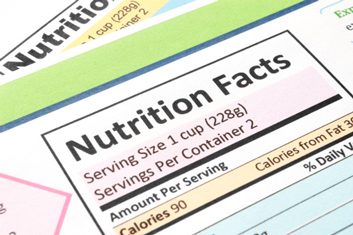
Decoding food labels
With so many claims on food labels, it’s not always easy to figure out if something is actually good for you or not. For example, a food that is promoted as “low in fat” may be packed with sugar or sodium. The upside is that nutrition claims are allowed only if the food meets the strict criteria outlined by the Canadian Food Inspection Agency’s Guide to Food Labelling and Advertising. The downside is that a nutrition claim doesn’t always give the whole picture. Here are 10 of the most common nutrition claims, along with my insider advice designed to help you become a supermarket sleuth!
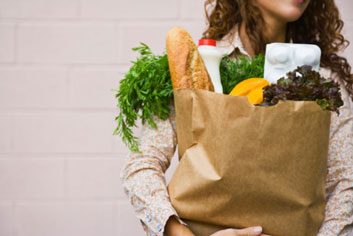
1. Label says: “Fat-free”
What it means: The food or drink contains less than 0.5 grams of fat per serving.
Sue’s advice: There are a few things to watch out for here. First of all, this label doesn’t necessarily mean the food is nutritious. Think jelly beans: Sure, they’re fat-free, but they’re basically sugar. On the other hand, almost all fruit and veggies are fat-free and incredibly nutritious. (Fresh produce is exempt from nutrition labelling, so there’s no label to say they’re fat-free.) Secondly, this claim does not give you a licence to eat more. Take a look at the serving amount on the food package. Quite often, it’s less than what you would typically eat. For example, if you eat double the amount listed, you need to double the fat content too, and then the portion isn’t necessarily fat-free anymore. Finally, keep in mind that a completely fat-free diet is neither practical nor healthy. We need to eat some healthy fats to help us better absorb vitamins A, D, E and K as well as certain antioxidants from food.

2. Label says: “Low in fat”
What it means: The food or drink contains three grams or less of fat per serving.
Sue’s advice: Most breads, crackers, cereals, grains and pasta are low in fat. But check the nutrition facts table on the packaging to see what other nutrients the food does or doesn’t have. Because fat gives food a certain texture, products that cut back on fat will often have more sugar. Compare product labels and choose low-fat items that also give you less sugar and sodium, and more fibre, than other brands. Other low-fat foods you’ll see in the grocery store that may or may not be labelled as such include beans, shrimp, roasted chicken breast and one percent milk.
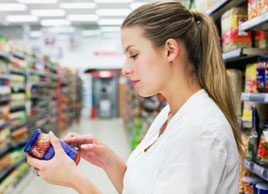
3. Label says: “Zero trans fat” or “Trans fat-free”
What it means: The food or drink contains less than 0.2 grams of trans fat per serving, and two grams or less of saturated fat and trans fat combined.
Sue’s advice: Trans fat has a double-whammy effect on our health. Not only does it increase the levels of “bad” low-density lipoprotein (LDL) cholesterol, but it also lowers the level of “good” high-density lipoprotein (HDL) cholesterol. Snack foods and baked goods are typical hiding places for trans fats. Although 0.2 grams of trans fat per serving is insignificant, it does add up if you end up eating a whole row of trans fat-free cookies. To be sure that an unlabelled food is trans fat-free, just read the ingredient list and make sure there is no “partially hydrogenated oil” or “shortening” listed.
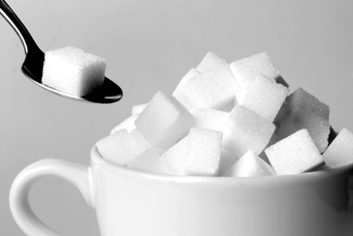
4. Label says: “Sugar-free”
What it means: The food or drink contains less than 0.5 grams of sugar (which is about 1/8 teaspoon) and has less than five calories per serving.
Sue’s advice: Sugar-free items, such as certain beverages, are usually made with a sugar substitute. Choosing these products more often can be particularly helpful for people with diabetes and for those who are watching their weight but want something sweet. As always, check the label and compare different brands to make sure that you’re not trading the sugar for more fat and sodium.
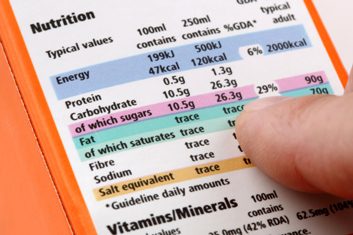
5. Label says: “Cholesterol-free”
What it means: The food or drink contains less than two milligrams of cholesterol per serving.
Sue’s advice: Don’t be duped by the “cholesterol-free” halo on packaged goods. Cholesterol is found only in animal-based foods. If you see cholesterol-free vegetable oil or salad dressings, keep in mind that these products never contained cholesterol to begin with. Cholesterol-free” doesn’t mean “fat-free,” either. So frozen french fries cooked in vegetable oil are indeed cholesterol-free…but are they fat-free? No-although you can find some brands that are low in fat.
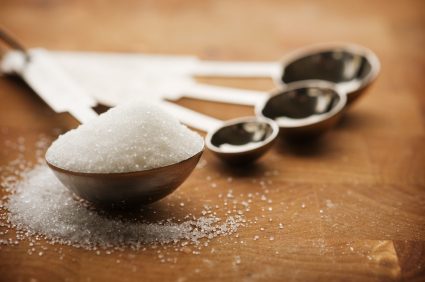
6. Label says: “No sugar added”
What it means: The food or drink contains no added sugars (such as sugar, honey, molasses or maple syrup) and no ingredients that have added sugars in them.
Sue’s advice: This claim only tells half of the story-the other half is the natural sugar that is found in the food. For example, one cup (250 mL) of purple grape juice blend may have no added sugar, yet it still has 35 grams (almost nine teaspoons) of natural sugar. Be a savvy shopper, and read both the front of the package and its nutrition label to get the whole story.

7. Label says: “High fibre”
What it means: The food contains four grams of fibre or more per serving.
Sue’s advice: Beans, lentils, granola bars and some cereals are among the foods that can be high in fibre. We need 21-38 grams of fibre every day. (According to Dietitians of Canada, women age 19-50 need 25 grams per day, while men age 19-50 need 30-38 grams per day.) Use a food’s fibre content as just one consideration when shopping. Keep in mind that foods with less than four grams of fibre can still be very nutritious. The classic examples are whole-grain cereals such as oatmeal, and whole grains such as brown rice and barley.
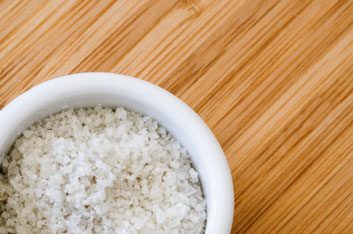
8. Label says: “Low sodium”
What it means: The food or drink has 140 milligrams or less of sodium per serving.
Sue’s advice: We should get only 1,500-2,300 milligrams of sodium a day, but most of us are eating more than double this amount. Too much sodium may lead to high blood pressure. Cut back by looking for foods with less sodium (such as low-sodium versions of crackers, canned fish and soups), but do a quick check of the fat content, too. A low-sodium potato chip that has more fat than regular chips is not a healthier choice.
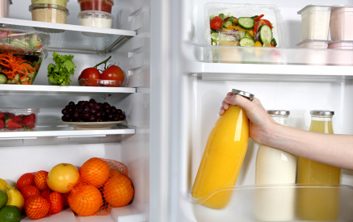
9. Label says: “A source/A good source/An excellent source of…”
What it means: The food or drink contains five percent ( “source”); 15 percent ( “good source”); or 25 percent ( “excellent source”) of the Recommended Daily Intake (RDI) of a particular vitamin or mineral.
Sue’s advice: Use these claims when choosing specific foods that address your nutrition concerns. For example, if you are a vegetarian, you will need to get more iron than non-vegetarians, so look for foods that are at least a good source of iron or, better yet, an excellent source. (There are a few exceptions to this rule, however. For example, for vitamin C, a food needs to have at least 30 percent of the RDI to be called a “good source” and 50 percent of the RDI to be an “excellent source.”)
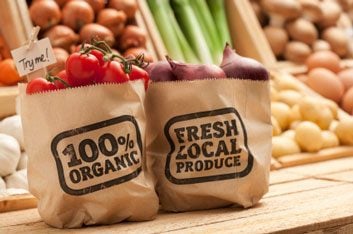
10. Label says: “Organic”
What it means: The food or drink contains 95 percent or more organic content.
Sue’s advice: Foods, including produce, can show the Canadian organic logo only if they are certified to be organic. If a food contains less than the percentage required, then it is described differently. For example, if a product has less than 95 percent organic ingredients, it can say it “contains X percentage organic ingredients,” but it can’t show the logo or be labelled “organic.” Bottom line: If you want a food that is at least 95 percent organic, look for the word “organic” or the organic logo.
Related:
• Debate: Should Canada label GMO foods?
• The facts about omega-3s
• Should we require mandatory nutrition labelling on menus?
